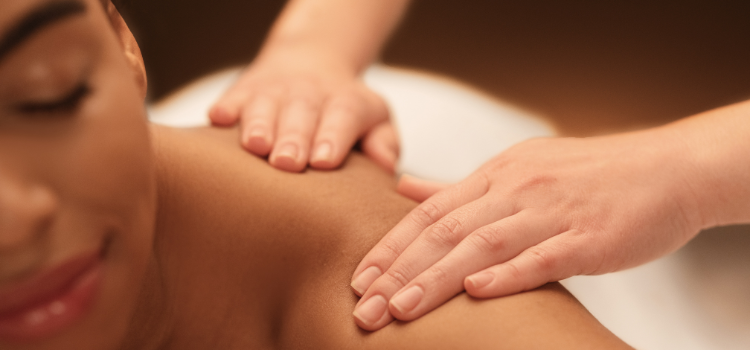
Neo-Reichian massage draws on an integrated perspective whereby the therapist observes that psychological conflicts are recorded in the body and that the physical manifestations (posture, tension, pain, voice, movement, etc.) are expressions of the person. This technique is distinguished from an approach that seeks to change posture without simultaneously accounting for psychological attitude, and a psychotherapeutic approach devoid of physical work. Underlying this approach is the integration of the body and emotion.
Skip to the heading:
History
Neo-Reichian massage (NRM) has been practiced in Québec for more than 10 years. It was first developed in Europe, inspired by the work of Dr. Wilhelm Reich in the 1960s. It is among the psychophysical approaches that aim to restore self-awareness by unifying physical sensations with emotional experience. Reich’s conclusions, which are linked direcly to Neo-Reichian massage, were as follows:
- The body has a memory that stores illnesses and unresolved trauma in the form of tension. This tension, housed in the body, manifests in the form of chronic muscle contractions, developed to survive; it is the expression of psychological mechanisms imprinted in the body.
- Sexual energy and psychic energy circulate within the body in an undulatory manner, as an impulse from the pelvis radiating to the head.
- The circulation of this energy, and by extension sensations, emotion, breathing and vitality, will be affected by muscle tension that builds up in the body (generally between the pelvis and the head).
- This condition interferes with letting-go, but also with being invested in one’s work, listening to music, observing an artwork, finding fulfillment in an intimate relationship, in games, etc.
- Muscle tensions become rooted in seven specific muscle segments attached to the front, sides and back of the body, thereby forming seven rings: ocular, oral, cervical, upper thoracic, diaphragmatic, abdominal and pelvic.
Applications and effects
This massage first leads the recipient to feel their “muscular armour” and become aware of the psychophysical link that exists between their muscular tensions, their problems and their everyday life. The massage therapist and the recipient then work together to undo the tensions and liberate the emotional charge that they contain.
Neo-Reichian massage inspires calm and serenity, thereby stimulating concentration and optimizing relaxation. The practitioner encourages the client to verbalize their emotions to better externalize their frustrations and submerged feelings. Several breathing techniques are also used to optimize the evacuation of toxins, which are extremely harmful to the organism.
Indications and contraindications
Neo-Reichian massage is used in cases involving headaches, neck or back pain, insomnia, anxiety, digestive problems, even professional burnout, or simply to fulfil a need to be touched, where it is lacking.
There are no strict contraindications for neo-Reichian massage, but in cases involving significant physical and psychological problems, it is essential to work as part of a multidisciplinary team, alongside specialized caregivers.
Conduct of a session
The massage therapist first has the client complete a psychophysical questionnaire on their current state of health, their physical health history, their mental health, and the important elements of their life experience.
The therapist retains any information related more specifically to rings of tension. These indications make it possible to evaluate the muscular armour and come up with a massage therapy plan that is flexible enough to be adapted to the client’s experience.
The therapist can recommend an exercise to prepare for body work, and they will follow the massage themselves and review the experience.
The massage, slow and deep without being painful, is performed from the head to the feet and from the centre to the periphery. In addition to massage maneuvers on the muscle and connective tissue, conscious breathing is used to help the recipient feel and express what is going on within them. There is space for body work and a verbal exchange, therefore, concerning what is felt inside the body.
The massage therapist can then recommend activities to do at home so that the client can continue integrating the benefits of the first session.

